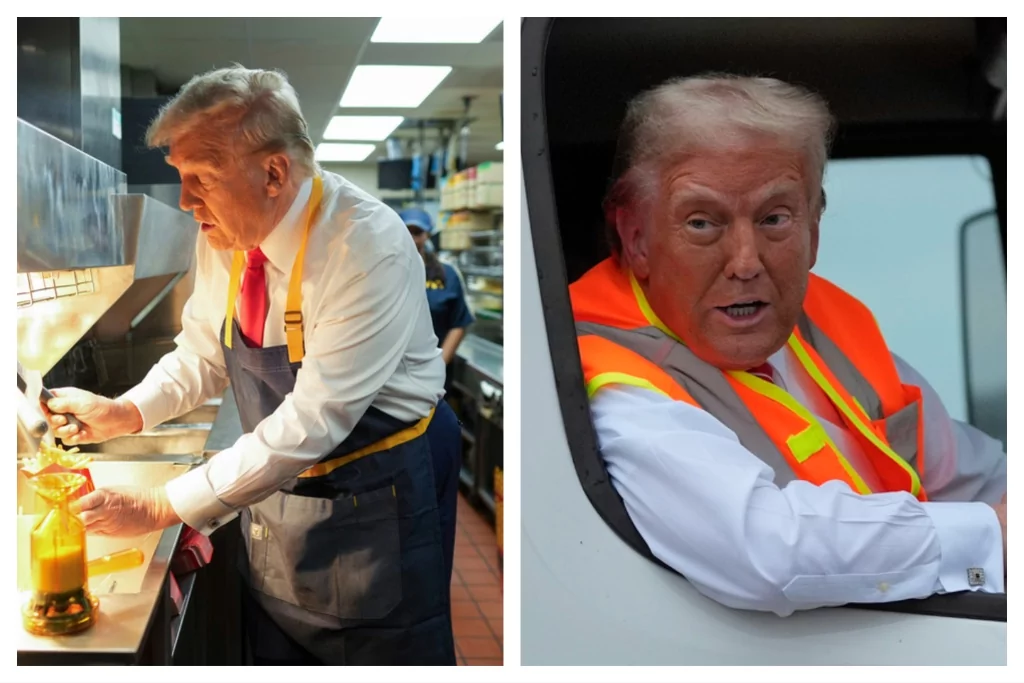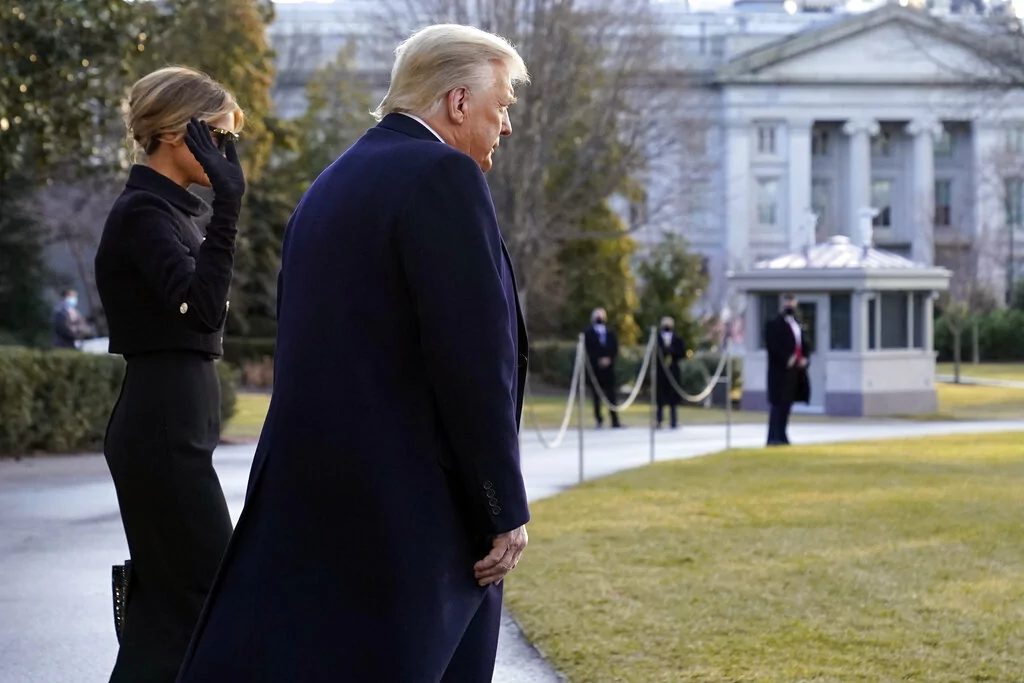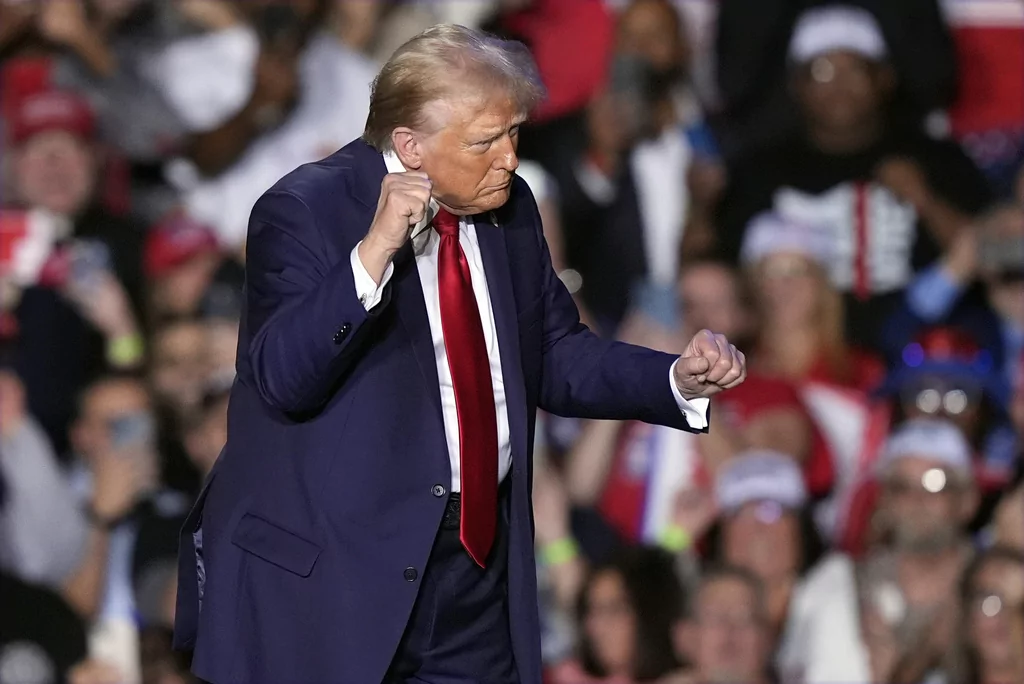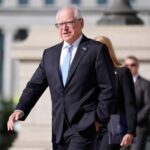
An unexpected dynamic months in the making appears to have reared its head during the final stretch of the presidential race: former President Donald Trump has achieved, against all odds and in the face of relentlessly negative media coverage, genuine mainstream popularity.
The hard-to-quantify shift has baffled and frustrated Democrats who have spent years cultivating a social toxicity around supporting Trump. Some analysts blamed those efforts for polling misses in 2016 and 2020 that led to undercounts of Trump’s support, hypothesizing that many voters were reluctant to admit to pollsters that they planned to vote for Trump.
But this election cycle, the former president has found a more welcome embrace in popular culture and by growing shares of racial groups thought to be out of reach for him – suggesting the “secret Trump voters” who may have kept his previous poll numbers low may now be out in the open.
2024 ELECTIONS LIVE UPDATES: LATEST NEWS ON THE TRUMP-HARRIS PRESIDENTIAL RACE
“The social stigma is coming off because he’s very well known in the public, and he hasn’t changed,” Jimmy Keady, a national Republican political consultant, told the Washington Examiner.
“I think people forget that Trump now has been running for office for close to 10 years, and Trump is more popular than he’s ever been, and he’s very well known,” Keady said. “I think that he’s been covered so much that voters now are just accepting Trump is who he is.”
Trump’s own actions certainly help. This campaign has been full of memorable moments for the former president, whether it be defiantly pumping his fit in the air moments after being grazed by a would-be assassin’s bullet, tending the drive-thru window and working the fryer at McDonald’s, or riding in a garbage truck and donning a high-visibility vest onstage. But his opponent’s weak record and floundering campaign have also helped. And his popularity is all the more notable because it comes as Democrats’s efforts to demonize him reach a fever pitch.

It also raises questions about whether Republicans are justified in celebrating polls that reflect a nearly-tied race on the assumption that surveys are once again failing to capture some of Trump’s support, when other evidence suggests voters may no longer feel socially obligated to keep their Trump support to themselves.
Measuring the vibe shift
Trump’s increase in popularity is evident in more than just polls showing a tighter race than at the same points in 2016 and 2020.
His favorability rating is the highest it has ever been.
Betting markets that reflected skepticism in his ability to win in 2016 and 2020 now suggest Americans strongly believe he will be the next president. In late October 2016, for example, such was the perception of Trump as unserious that bettors gave him just a 15% chance of winning the White House.
Now, they give Trump a 60% chance of victory.
More subjective measures point to a Trump bump as well. In 2016 and 2020, few celebrities on the right side of middle age or at the peak of their careers backed Trump. Trump’s popular culture welcome began and ended with the likes of Jon Voight and Roseanne Barr.
This cycle, reality TV stars Amber Rose and Savannah Chrisley graced the stage at the Republican National Convention. Kansas City Chiefs kicker Harrison Butker endorsed the former president. Brittany Mahomes, wife of fellow Chiefs star Patrick Mahomes, made no attempt to hide her pro-Trump activity on social media despite the attacks on her it inspired. Shark Tank star Kevin O’Leary, nicknamed Mr. Wonderful, has openly criticized lawfare against Trump and defended some of the former president’s proposals.
“We’re seeing more handmade Trump signs. We’re seeing more Trump 2024 flags. We’re seeing boat rallies once again,” a former senior Trump White House official told the Washington Examiner. “And what happens is, that starts, [and] people start to say, ‘Well, I’m not alone. I was quiet, and I was willing to be quiet.’”
The cultural shift around Trump can be seen in his gains with specific voter groups, too.
“The easiest way to evidence that is to look at the pretty dramatic shifts in support for Trump amongst demographics that the educated punditry would say, you’re never going to see Trump voters there,” Justin Wallin, a GOP pollster, told the Washington Examiner. “I’m specifically talking about black men and, to a greater extent, Latino voters.”
Recent polls suggest as many as one in four black men support Trump over Vice President Kamala Harris. A Reuters/Ipsos poll published this week showed Trump trailing Harris by just 2 points with Hispanic men, a group Joe Biden carried by 19 points in 2020.
And the reduction in social toxicity around Trump can arguably be seen in things that have not materialized.
The Teamsters, one of the country’s largest labor unions, chose not to endorse Trump’s opponent and instead withheld a presidential endorsement for the first time in nearly 30 years. Teamsters President Sean O’Brien spoke at the GOP convention over the summer, becoming the first Teamsters leader ever to have done so, and he did not grace the stage at the Democratic convention weeks later.
The Los Angeles Times and the Washington Post both declined to endorse Trump’s opponent in the final weeks of the election, causing uproar within the media, as well as their internal ranks.
What’s behind the rise?
Attributing the vibe shift around Trump to any one moment or dynamic is difficult.
Trump’s journey from the defeated incumbent who left Washington a pariah two weeks after the Jan. 6, 2021 riots, to the Madison Square Garden headliner earning invitations onto some of the country’s most popular podcasts has been filled with unexpected twists.

It’s safe to say some of the Democratic efforts to keep Trump toxic backfired.
The mugshot snapped of Trump in August 2023 after a Democratic district attorney brought unprecedented criminal charges against him in Georgia quickly became an iconic image of defiance for his supporters, for example. Trump’s conviction in May on charges brought by a different Democratic district attorney sparked a fundraising surge for his campaign and attracted unlikely defenders who believed the former president had been unfairly targeted.
Signs that the zeitgeist was changing around Trump began emerging months ago.
In January, JPMorgan Chase CEO Jamie Dimon raised eyebrows when he defended Trump and criticized Democrats for attacking the movement behind him.
“I wish the Democrats would think a little more carefully when they talk about MAGA, you know?” Dimon said during an interview at the World Economic Forum in Davos, Switzerland.
“Just take a step back, be honest. He’s kind of right about NATO. Kind of right about immigration. He grew the economy quite well,” Dimon said of Trump. “Tax reform worked. He was right about some [things] with China … I don’t like how he said things about Mexico, I don’t like — but he wasn’t wrong about some of these critical issues. And that’s why they’re voting for him. And I think people should be a little more respectful of our fellow citizens.”
The comments — coming from a member of the elite at one of the world’s most elite events, at a point when conventional wisdom still leaned toward a comfortable Joe Biden reelection — made headlines as surprising candor at the time but presaged what would become a prevailing attitude just 10 months later.
Economic uncertainty, the threat of cascading global crises, and a spiraling immigration mess during the Biden-Harris administration has helped recast Trump’s four years in office in a more positive light.
“You’ve never had a president who’s run, won, lost, and then run again in recent memory,” said Keady, the Republican consultant. “The election comes down to, are you better off than you were five years ago?”
Voters’ fond memories of the economy during the Trump years have helped shrink the significance of Democratic arguments about Trump’s character and rhetoric, which helped keep his victory narrow in 2016 and cost him the presidency in 2020.

The natural inclination to root for a winner could also be fueling Trump’s perceived momentum this time around, the ex-White House official said.
“It does help that he’s done as well as he has in the polls, where [voters] don’t think that they’re agreeing with 40% of the nation, they believe that they are agreeing with 50% of the nation, more or less,” the former official said.
“They can be bolder for Donald Trump and speak out in their community and in their churches and in their place of business and not be afraid that it’s such a minority position that they’ll get ridiculed,” the former official added. “They realize now it’s not a minority position.”
Trump’s campaign has also worked strategically to humanize the former president. A viral TikTok video in June featuring Trump giggling with popular YouTube personality Logan Paul racked up millions of views. Trump spoke more frequently about his role as a grandfather on the campaign trail, showing off his grandchildren at a rally in September. And Trump’s turn behind the drive-through at a Pennsylvania McDonald’s earlier this month highlighted a warm side to Trump that clashed starkly with the image of him as a Hitler-esque dictator being painted by his opponents.
Silent Trump voters may be speaking
Pollsters’ struggle to capture Trump’s support accurately became one of the dominant political stories out of the 2016 election and, to a lesser extent, the 2020 race.
The debate over why and by how much public polls really missed Trump’s rise continues today. After the dust settles this cycle, analysts will assess whether the same mistakes skewed surveys once again.
The difference between now and Trump’s previous two runs is that polls show him statistically tied with Harris, whereas, in 2016 and 2020, polls predicted comfortable Democratic victories that did not materialize.
On Oct. 25, 2016, for example, Hillary Clinton led Trump by 5.2 points in an average of Pennsylvania polls by RealClearPolitics. Trump went on less than two weeks later to win Pennsylvania by 1.2%.
On Oct. 25, 2020, the RealClearPolitics average in Pennsylvania had Biden up by 4.8 points. Biden won Pennsylvania by just 1.2%.
On Oct. 25 of this year, Trump leads Harris in Pennsylvania by a slight 0.6-point margin in the same polling average.
If polls are off by similar degrees in 2024, Trump could, therefore, be looking at a relatively comfortable victory in the must-win state of Pennsylvania.
But methodological adjustments made by pollsters over the past eight years and the falling social and professional cost of admitting to a Trump vote could mean there is no longer a slice of the electorate evading capture in surveys.
And that could mean Trump is indeed headed to a photo finish on Election Day.
“I do not believe there was a silent Trump voter,” said Wallin, the GOP pollster, who acknowledged that the national public polls appeared to overcount support for Biden by several points in 2020.
“The public polls are working with these structural challenges with online polling that they’re trying to find workarounds with,” he said. “The way I look at it is, if you’re from an outsider looking in, you’re best to apply some degree of judgment based on history.”
Proponents of the silent Trump voter theory point to the history of polls undercounting Trump support in previous cycles — and the results of a particular survey question that they say better captures voters’ true sentiments.
Arie Kapteyn, director of USC’s Dornsife Center for Economic and Social Research, said in 2020 that a “social-circle” question, which asked respondents who they believed their friends and neighbors planned to vote for, yielded a more accurate estimation of support for Trump because it shielded voters from having to admit their own support for him.
When asking voters simply about who they personally planned to support, “[w]e actually get a 10-point lead, nationally, for Biden over Trump,” Kapteyn told Politico in Oct. 2020. “But if you look at the ‘social-circle’ question, Biden only gets like a 5- or 6-point lead. … In general—and certainly on the phone—people may still be a little hesitant to say to that they’re Trump voters.”
Biden went on to win the national popular vote by 4.4%.
CLICK HERE TO READ MORE FROM THE WASHINGTON EXAMINER
Trump and Harris are tied in national surveys roughly one week before Election Day.
Although that has given some Republicans confidence that Trump is on his way to a big win, the permission structures now in place for voters — from the dismal performance of the Biden and then Harris campaigns to the viral moments that humanized Trump to the perception that supporting Trump no longer makes them outliers — could be allowing silent Trump supporters to speak in surveys this cycle in ways that indicate the race is indeed close enough to go either way.






